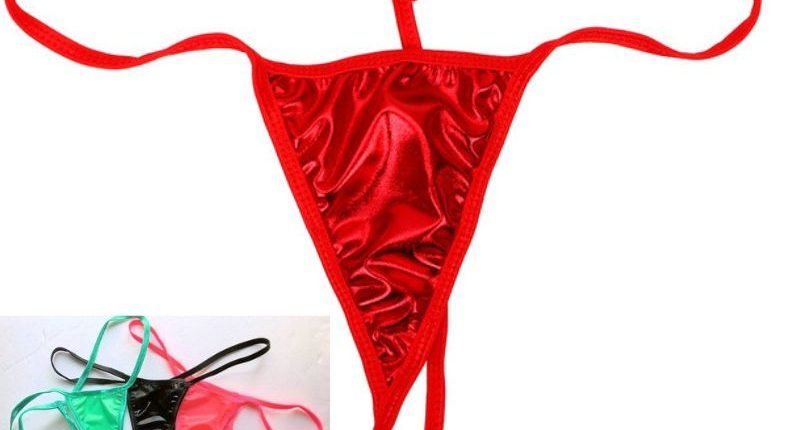A look at “G string side effects” – The popularity of g-strings has been on the rise for several years now, but it’s still not entirely understood how wearing one can affect a person’s health and wellbeing. While many people consider them to be comfortable and convenient, it’s essential to understand the potential side effects before making a decision to wear one.
Read on to explore the possible g string side effects, both physical and psychological, and provide tips on how to minimize the risks.

Physical Side Effects
Irritation and Allergic Reactions
Wearing a g-string can cause skin irritation, particularly in people with sensitive skin. The thin strip of material that runs between the legs can cause friction and rub against the skin, leading to redness, itching, and even blisters. Some people may also experience allergic reactions to the materials used in the g-string, such as dyes or elastic. If you have experienced skin irritation or an allergic reaction to undergarments in the past, it’s best to avoid wearing a g-string.
Yeast Infections
Wearing a g-string can also increase the risk of yeast infections, particularly in women. The thin strip of material can trap moisture and create a warm, moist environment that is perfect for yeast to grow. This can lead to itching, burning, and discharge. Women who are prone to yeast infections should avoid wearing g-strings, or at least switch to a more breathable underwear option, such as cotton briefs.
Urinary Tract Infections
Wearing a g-string can also increase the risk of urinary tract infections (UTIs). The thin strip of material can transfer bacteria from the anus to the urethra, leading to an infection. Women are more susceptible to UTIs, but men can also develop them. If you experience symptoms such as pain or burning during urination, cloudy or strong-smelling urine, or pelvic pain, it’s essential to see a doctor.
Psychological Side Effects
Body Image Issues
Wearing a g-string can also have a psychological impact on a person’s body image. The thin strip of material can highlight any perceived flaws or insecurities, leading to feelings of self-consciousness and low self-esteem. Additionally, the media often portrays g-strings as a symbol of sexiness and attractiveness, which can lead to feelings of pressure to conform to unrealistic beauty standards.
Sexualization
Wearing a g-string can also contribute to the sexualization of a person’s body. The thin strip of material can be considered provocative and draw attention to the genital area, leading to unwanted sexual attention or harassment. This can be particularly damaging for young girls and women who are still developing their sense of self and sexuality.
How to Minimize Risks
Choose the Right Material
When choosing a g-string, it’s essential to select one made from breathable materials, such as cotton or bamboo. Avoid synthetic materials that can trap moisture and cause irritation. Additionally, look for g-strings with wider sides or a thicker strip of material to reduce friction and skin irritation.
Practice Good Hygiene
Practicing good hygiene can also help minimize the risks associated with wearing a g-string. Make sure to wash your g-string regularly, and change it at least once a day. Avoid wearing a g-string for extended periods, particularly in situations where you may become overheated or sweat excessively, such as during exercise or in hot weather.
Avoiding Overuse
When it comes to wearing G-strings, there are a few potential risks that you should be aware of in order to avoid overusing them. First, because G-strings are so revealing, they can easily become dirty and full of bacteria if you don’t take proper care of them. This can lead to infections or other health problems, so it’s important to make sure you clean your G-string regularly.
Second, G-strings can also cause chafing and irritation if you wear them too often or for too long at a time. This is why it’s important to take breaks from wearing them and to make sure you’re choosing a comfortable style that doesn’t rub against your skin in an uncomfortable way.
Finally, wearing G-strings all the time can make you more susceptible to UTIs or other urinary tract infections. So if you find yourself getting UTIs frequently, it might be a good idea to switch to another type of underwear or at least give your body a break from G-strings every now and then.
More Tips
• Choose a G-string made from breathable fabric like cotton or linen. Avoid synthetic fabrics like polyester, which can trap heat and moisture against your skin.
• If you experience chafing or irritation, apply a soothing ointment like petroleum jelly or aloe vera gel to the affected area.
• Always wash your G-string after wearing it, using mild soap and warm water. Pay attention to any areas that seem particularly sweaty or dirty.
• Let your G-string air dry before wearing it again. Avoid putting it in the dryer, as this can damage the fabric and cause further irritation.
Conclusion
Wearing G-strings can be a great way to show off your body and feel confident, but it is important to remember the potential risks associated with them. By following the tips we outlined in this article, you can reduce these risks and ensure that you’re wearing g-strings safely. With such protection measures in place, there’s no reason why you can’t continue embracing these sexy pieces of lingerie without compromising your health.
G string side effects | Also read | 11 Incredible Ailments Bitter Kola Can Cure









